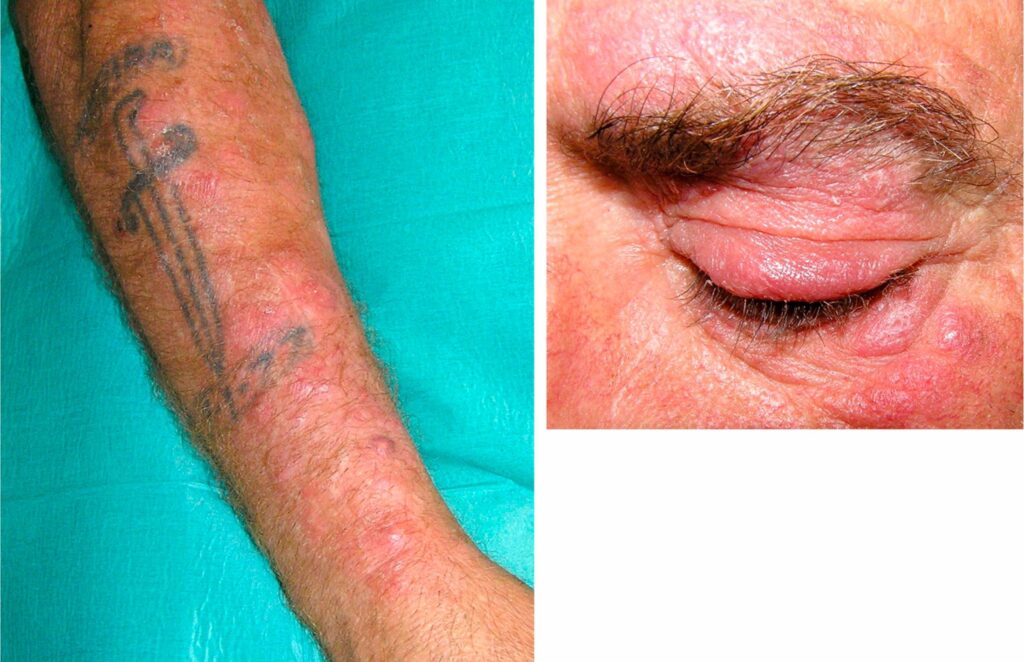Disseminated aspergillosis is a severe, systemic fungal infection caused by the Aspergillus species, notably Aspergillus fumigatus. This condition arises when the fungus spreads from a primary site, typically the lungs, to multiple organs, posing significant health risks, especially to immunocompromised individuals.

Etiology and Risk Factors
Aspergillus species are ubiquitous molds found in soil, decaying vegetation, and indoor environments. Inhalation of airborne conidia (spores) is the primary route of exposure. While healthy individuals can usually clear these spores without adverse effects, certain factors increase susceptibility to disseminated aspergillosis:
- Immunosuppression: Patients undergoing chemotherapy, organ transplantation, or long-term corticosteroid therapy have weakened immune defenses, facilitating fungal invasion.
- Neutropenia: A reduced neutrophil count impairs the body’s ability to combat fungal infections.
- Chronic Lung Diseases: Conditions like chronic obstructive pulmonary disease (COPD) and tuberculosis can predispose individuals to aspergillosis.
- Critical Illnesses: Severe viral infections, such as influenza or COVID-19, have been associated with secondary aspergillosis.
Pathophysiology
Upon inhalation, Aspergillus spores can settle in the alveoli of the lungs. In immunocompromised hosts, these spores germinate into hyphae, which can invade pulmonary tissue and blood vessels. The hematogenous spread allows the fungus to disseminate to various organs, including the brain, kidneys, liver, and skin, leading to multi-organ involvement.
Clinical Manifestations
The symptoms of disseminated aspergillosis are varied and depend on the organs affected. Common manifestations include:
- Pulmonary Symptoms: Fever, cough, chest pain, and hemoptysis.
- Neurological Symptoms: Headache, seizures, focal neurological deficits, and altered mental status, indicative of central nervous system involvement.
- Cutaneous Symptoms: Skin lesions ranging from erythematous macules to necrotic ulcers.
- General Symptoms: Fever unresponsive to antibiotics, weight loss, and malaise.
Diagnostic Approaches
Early diagnosis is crucial for effective management. Diagnostic strategies encompass:
- Imaging Studies: Chest computed tomography (CT) scans may reveal nodules, cavitations, or the characteristic “halo sign.”
- Microbiological Tests: Culture and histopathological examination of tissue samples can identify fungal elements.
- Serological Tests: Detection of galactomannan and beta-D-glucan, components of the fungal cell wall, in blood or bronchoalveolar lavage fluid supports the diagnosis.
- Molecular Methods: Polymerase chain reaction (PCR) assays can detect Aspergillus DNA with high sensitivity.
Treatment Modalities
Management of disseminated aspergillosis involves antifungal therapy and addressing underlying risk factors:
- Antifungal Agents: Voriconazole is the first-line treatment. Alternatives include liposomal amphotericin B, posaconazole, and isavuconazole.
- Combination Therapy: In severe cases, combining antifungal agents may enhance efficacy.
- Surgical Intervention: Debridement or resection of infected tissue may be necessary in cases of localized infection or when antifungal therapy is insufficient.
- Immune Restoration: Reducing immunosuppressive therapy or administering colony-stimulating factors can help restore immune function.
Prognosis
The prognosis of disseminated aspergillosis depends on factors such as the patient’s immune status, the extent of organ involvement, and the timeliness of treatment initiation. Despite advancements in antifungal therapies, the condition carries a high mortality rate, emphasizing the importance of early diagnosis and intervention.
Prevention Strategies
Preventive measures are essential, especially for high-risk individuals:
- Environmental Controls: Reducing exposure to Aspergillus spores by avoiding construction areas, using high-efficiency particulate air (HEPA) filters, and maintaining clean hospital environments.
- Antifungal Prophylaxis: Administering antifungal agents, such as posaconazole, to high-risk patients can prevent infection.
- Monitoring and Surveillance: Regular screening for early signs of infection in immunocompromised patients facilitates prompt treatment.